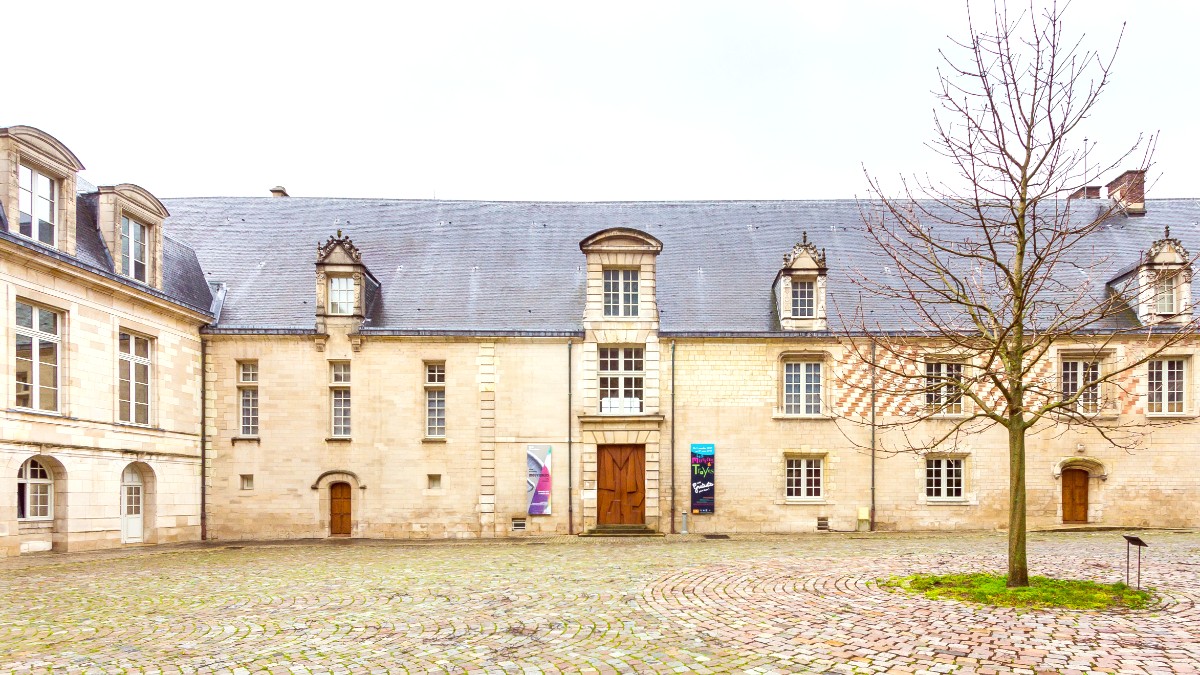
Champagne, France
The cuisine of Troyes reflects its agricultural surroundings and historical trade routes. Pork products, for example, come from traditional farming practices in the area.
Champagne into dishes, while not as widespread as one might expect, showcases the region's most famous export. Historically, hearty food supported merchants and workers in Champagne Fairs and the textile industry.
A central ingredient in many local specialties, notably for sausages and cured meats. You find various preparations.
Beyond a drink, Champagne is in sauces. Chaource is a soft, creamy cow's milk cheese. Langres is a strong, pungent cow's milk cheese, often with a splash of Champagne.
Mustard is often served with local meats, especially sausages. Potatoes, Cabbage, and Leeks are common vegetables in traditional, comforting dishes.
Troyes' most famous culinary specialty. A coarse-grained sausage from pork chitterlings, known for its unique, strong aroma and flavor. An acquired taste for some. Often grilled or pan-fried, typically with mustard sauce and frites.
Find in traditional "brasseries" or "restaurants traditionnels."
A soft, creamy, full-fat cow's milk cheese with a white bloomy rind, produced near Troyes. It has a slight mushroomy flavor and a delicate, often slightly salty, taste.
Purchase at local markets (Les Halles), specialty cheese shops, and on restaurant cheese boards.
Rosé des Riceys is a rare, still rosé wine from Pinot Noir grapes produced south of Troyes. It is an unique character. Tasting Champagne from local Côte des Bar producers is a culinary experience.
Seek Rosé des Riceys in local wine shops. Find Champagne at local producers.
A regional specialty, different from Parisian macarons. Often simpler, more rustic, with a chewy texture.
A traditional spiced bread, often found in local bakeries and especially popular during the colder months.
Restaurants in Troyes hold refined French cuisine. These establishments often focus on local produce, innovative preparations, and a curated wine list with excellent Champagne pairings.
Abundant options exist in the historic city center and surrounding areas. These restaurants offer traditional French brasserie fare, regional specialties, and casual dining in a comfortable setting.
Boulangeries/Pâtisseries are goldmines for budget-friendly meals. Crêperies offer quick meal options. Markets are perfect for assembling a picnic.
The main covered market, open most mornings from Tuesday to Sunday. Find stalls selling fresh produce, high-quality meats, cheeses, fish, and specialty foods.
Ideal for local food culture and gathering ingredients for a picnic or self-catering.
Various outdoor markets take place on different days of the week in Troyes. The largest are often on Boulevard du 14 Juillet (Wednesdays and Saturdays).
These markets offer fresh produce, local products, and a lively atmosphere.
Vegetarian options are increasingly available; vegan options pose more challenge. Clearly state your dietary needs.
Always inform staff of allergies. French chefs are knowledgeable, but cross-contamination is not guaranteed. Naturally gluten-free options are available.
Use apps like HappyCow. Carry a Translation card explaining restrictions in French.
Limited options in Troyes. More choices in larger cities like Paris.
Many farms near Chaource (a short drive from Troyes) offer direct sales of their cheese and sometimes tours, for seeing the production process.
A direct way to experience local agriculture.
Visiting Champagne producers is an experience. Many offer guided tours of their cellars (caves) and tasting sessions.
Focus on the Côte des Bar region (Aube department) for smaller, often family-run producers, where you often have a personal experience. Booking ahead is often needed.
Caves à Champagne: Many Champagne producers hold tasting rooms, where you sample and purchase their wines directly. These visits are a core part of the Champagne experience.
Experience classic French dining with local specialties in a lively, often historic setting. These establishments are a staple of French culinary life.
Check the local Troyes Champagne Tourisme calendar for markets featuring seasonal fruits and vegetables, reflecting the current harvest.
These occur throughout the year in the region, for sampling a wide array of local products directly from producers.
During various festivals or special events, you find specific regional dishes highlighted or special food stalls.
Vegetarian options are available, but traditional French cuisine holds meat. Vegan options pose more challenge. Research vegan-friendly restaurants ahead.
Opt for self-catering or clearly state your dietary needs.
Always inform restaurant staff of allergies. Many traditional dishes contain gluten. Look for naturally gluten-free options.
Carry a Translation card explaining dietary restrictions in French.
Participate in French or Champagne-themed cooking classes offered by local B&Bs or specialized schools. Learn about regional ingredients and techniques.
Visit Champagne producers in the Côte des Bar for guided cellar tours and intimate tasting sessions. Discover the refinements of local sparkling wines.
Explore local farms, especially Chaource cheese producers, for direct sales and sometimes tours, a direct link to the region's agricultural heritage.
Always check restaurant opening hours, especially between lunch and dinner, as many establishments close during this period.